Abstract
Experiments have been performed in an isolation unit to investigate the effects of abnormal sleep-waking schedules upon circadian rhythms of renal excretion and deep-body temperature. In confirmation of previous work, nychthemeral rhythms appeared to be 'anchored' to a 24 h period if 4 h sleep was taken regularly each day, even though another 4 h was taken irregularly. The endogenous components were investigated by assessing circadian rhythmicity under constant routine conditions, that is, when rhythmic influences in the environment and sleep-waking pattern had been minimized. Analysis of the constant routine data indicated the presence of a rhythmic component which had been stabilized to a period of 24 h by the 'anchor sleep'. In addition, a delayed component was also present. The starting time of the constant routines produced a direct effect upon the rhythms, which was presumed to result from removing the 'masking' effect that sleep normally exerts upon rhythms. There was some evidence that the relative importance of the masking effect and the delayed component depended upon the variable under consideration. The implications of these findings, in terms of the effects of anchor sleep, the presence of more than one internal clock and the usefulness of constant routines, are discussed.
Full text
PDF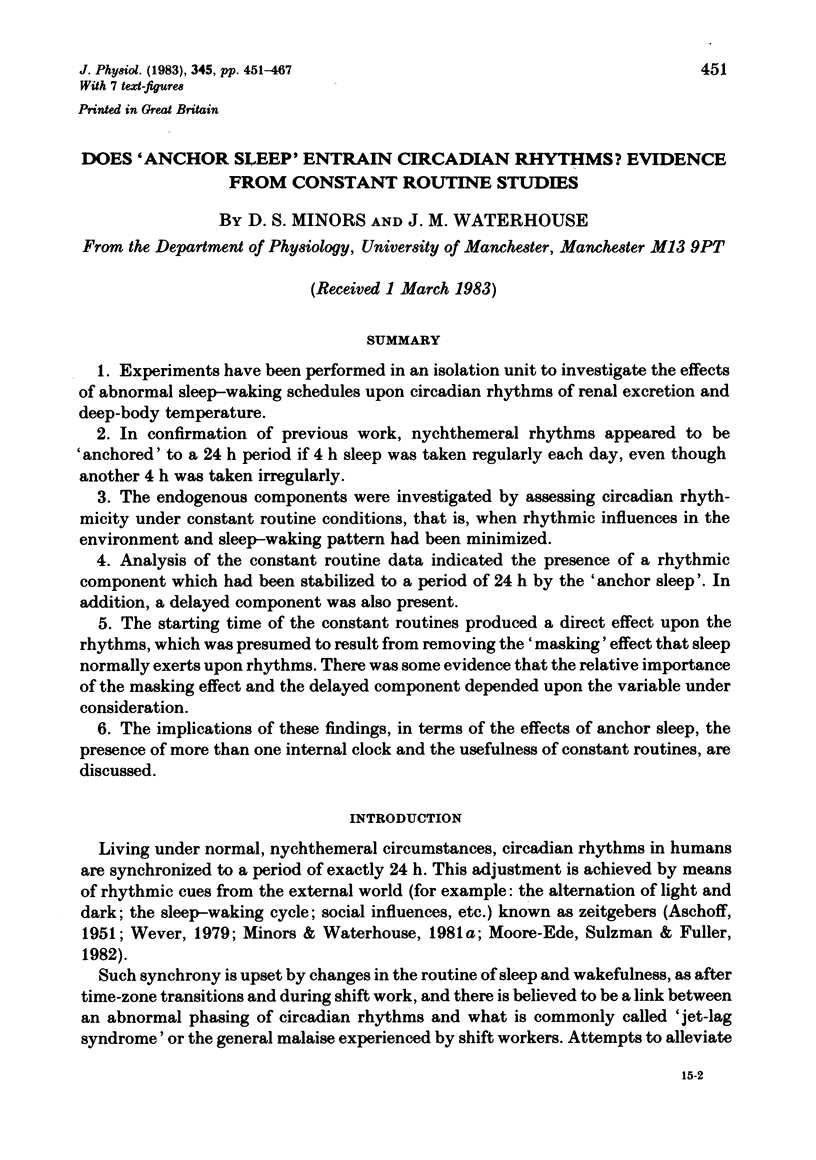
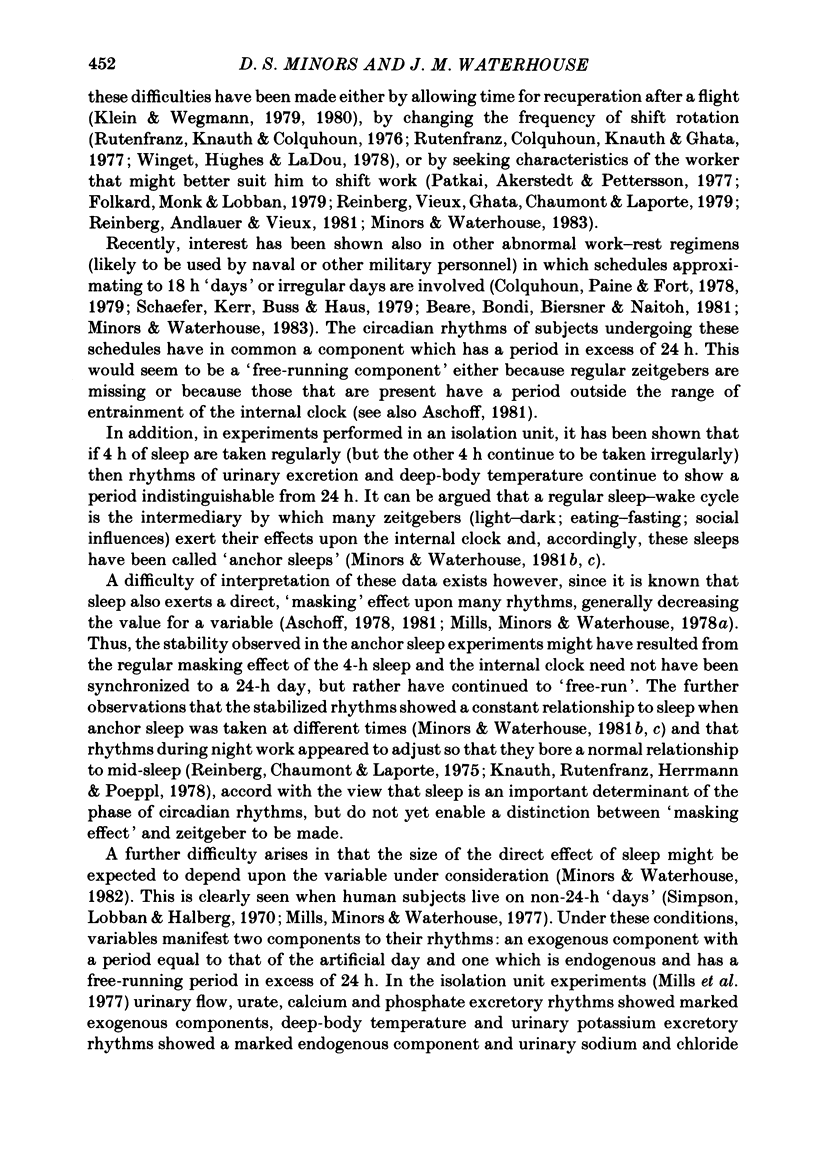
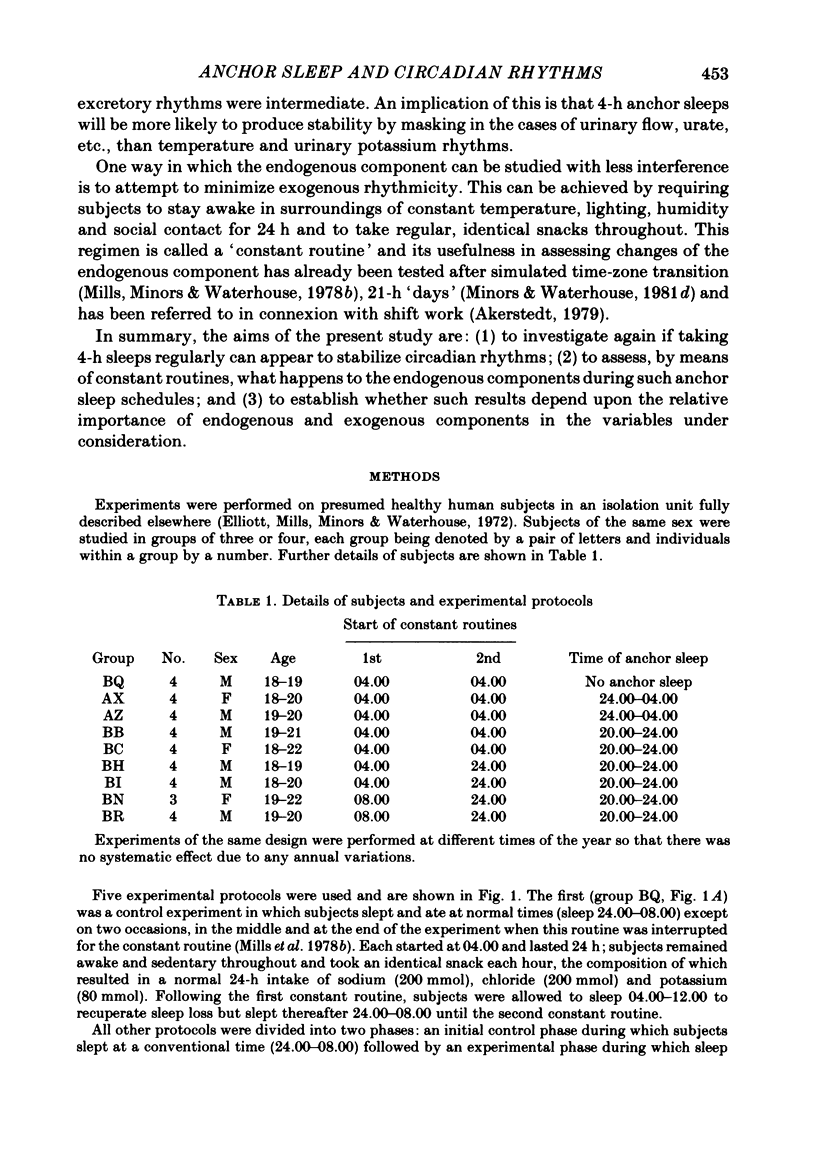
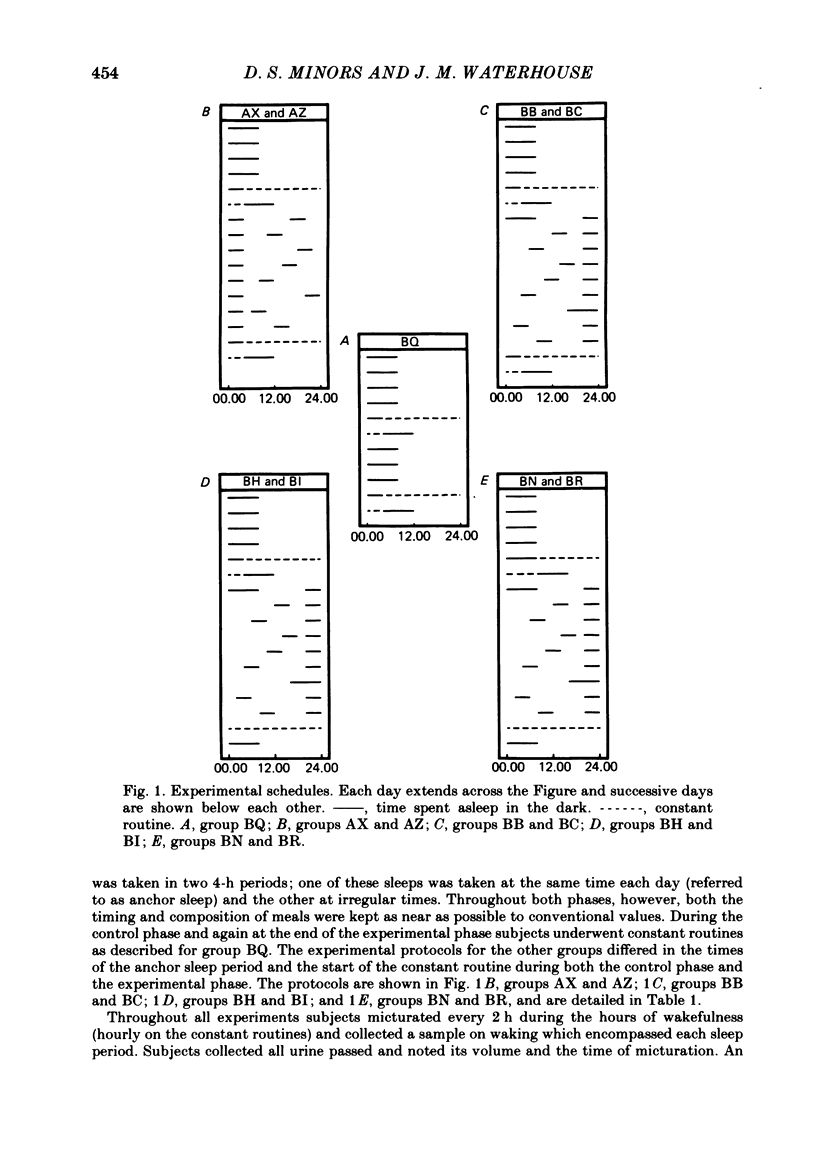
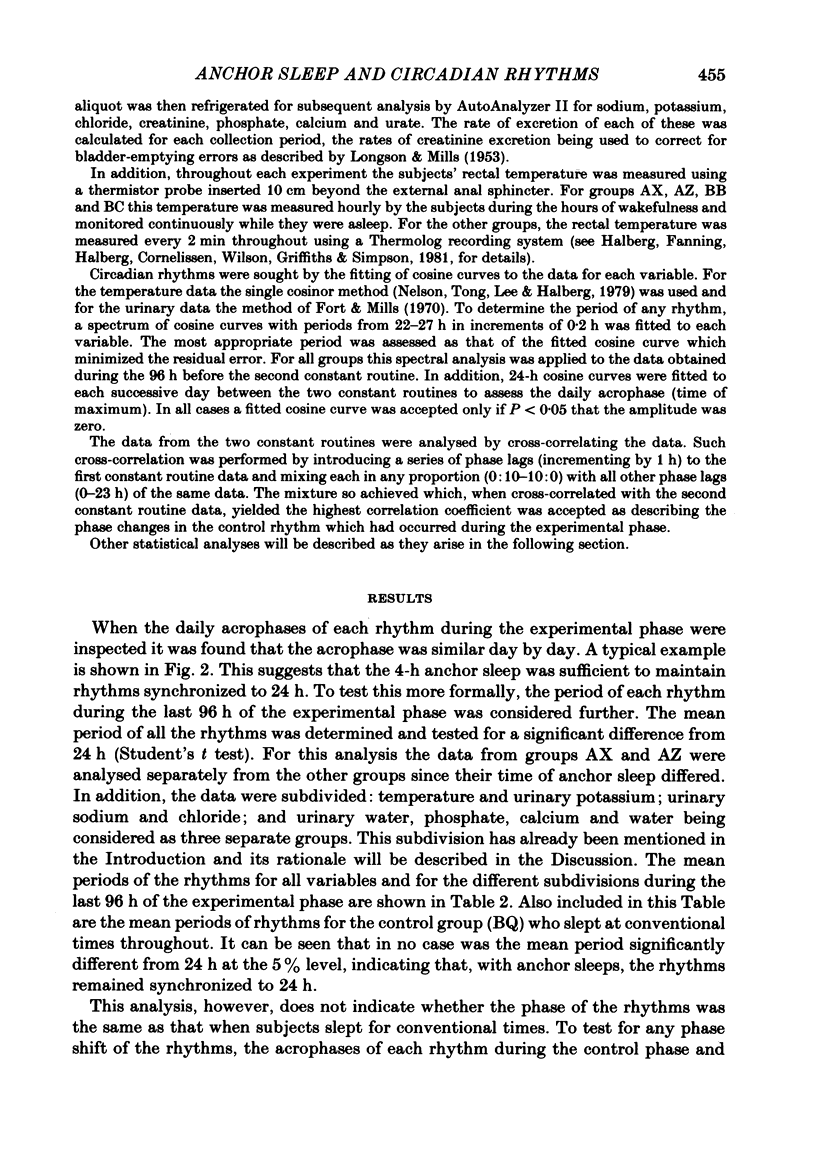
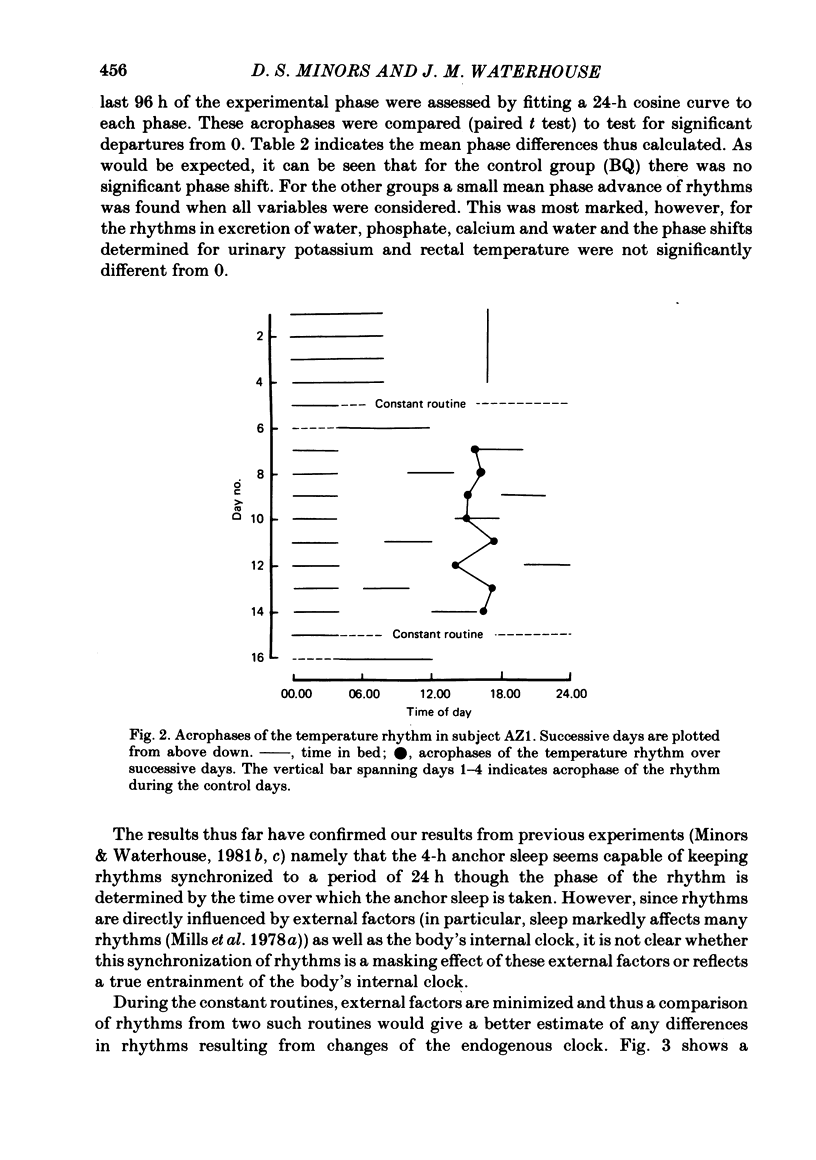
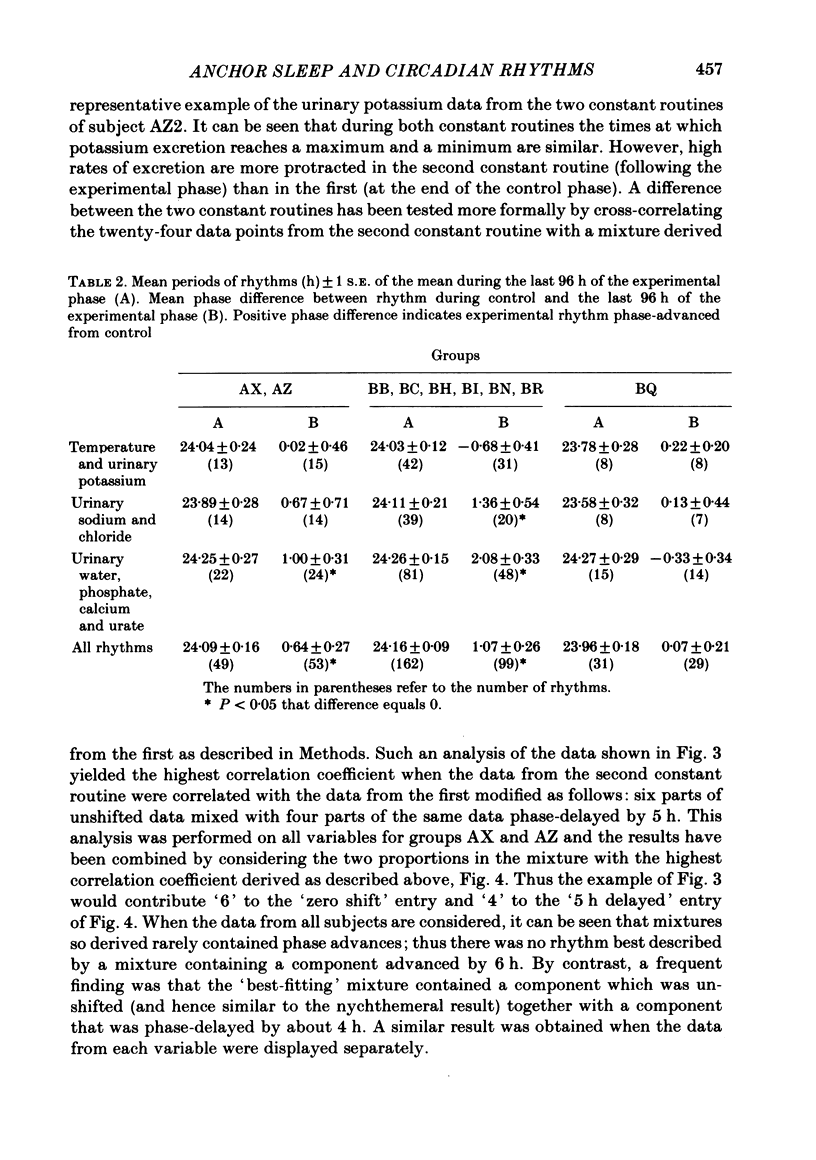
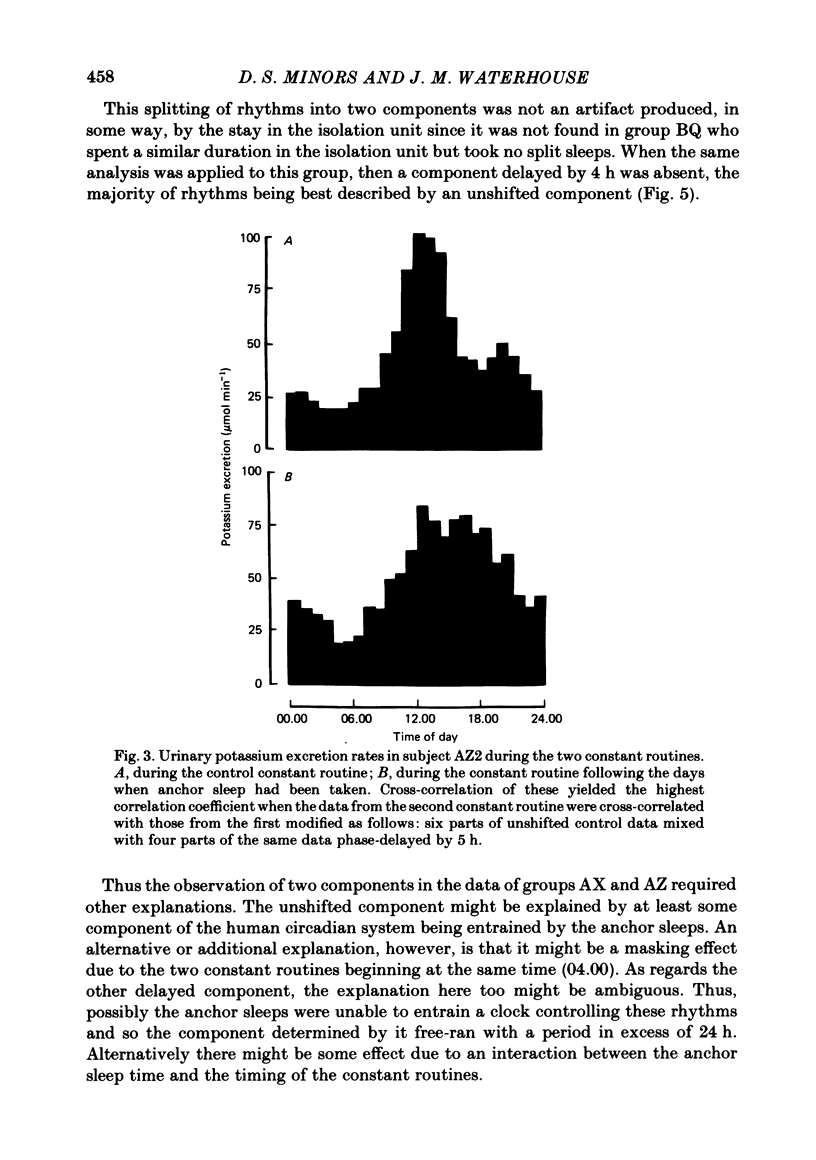
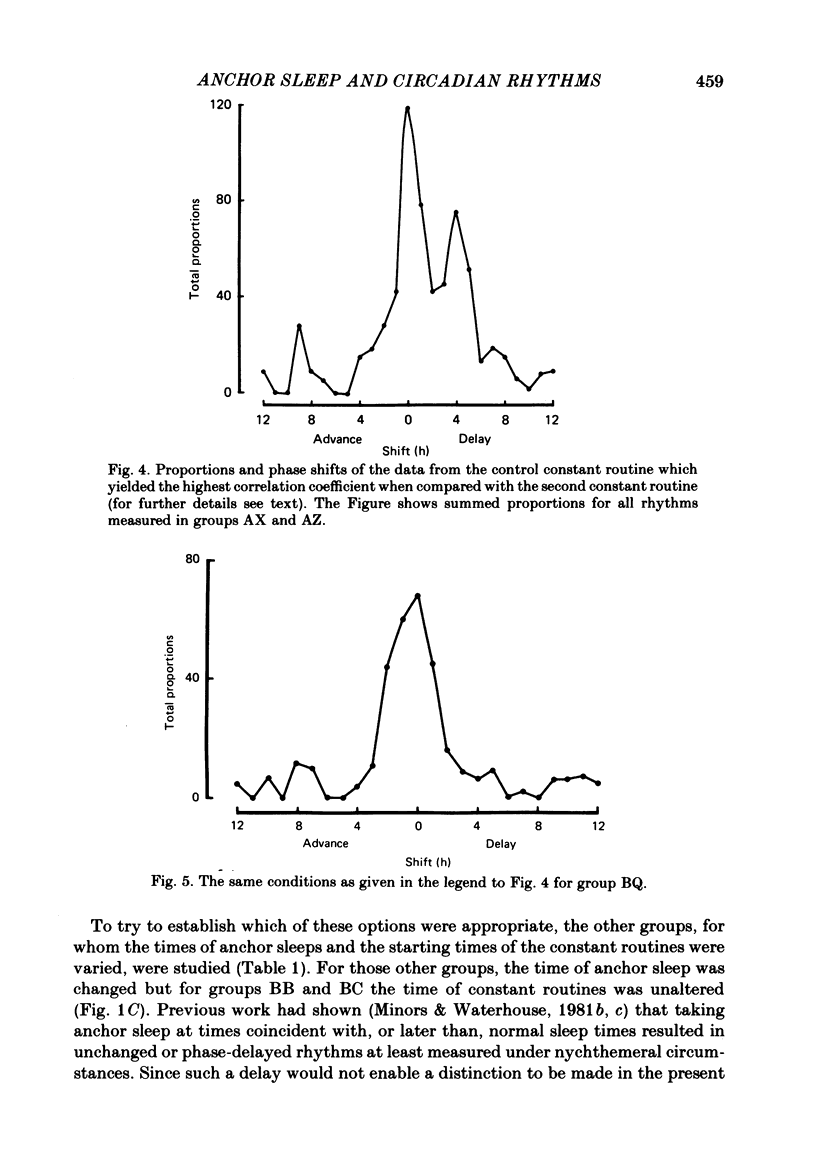
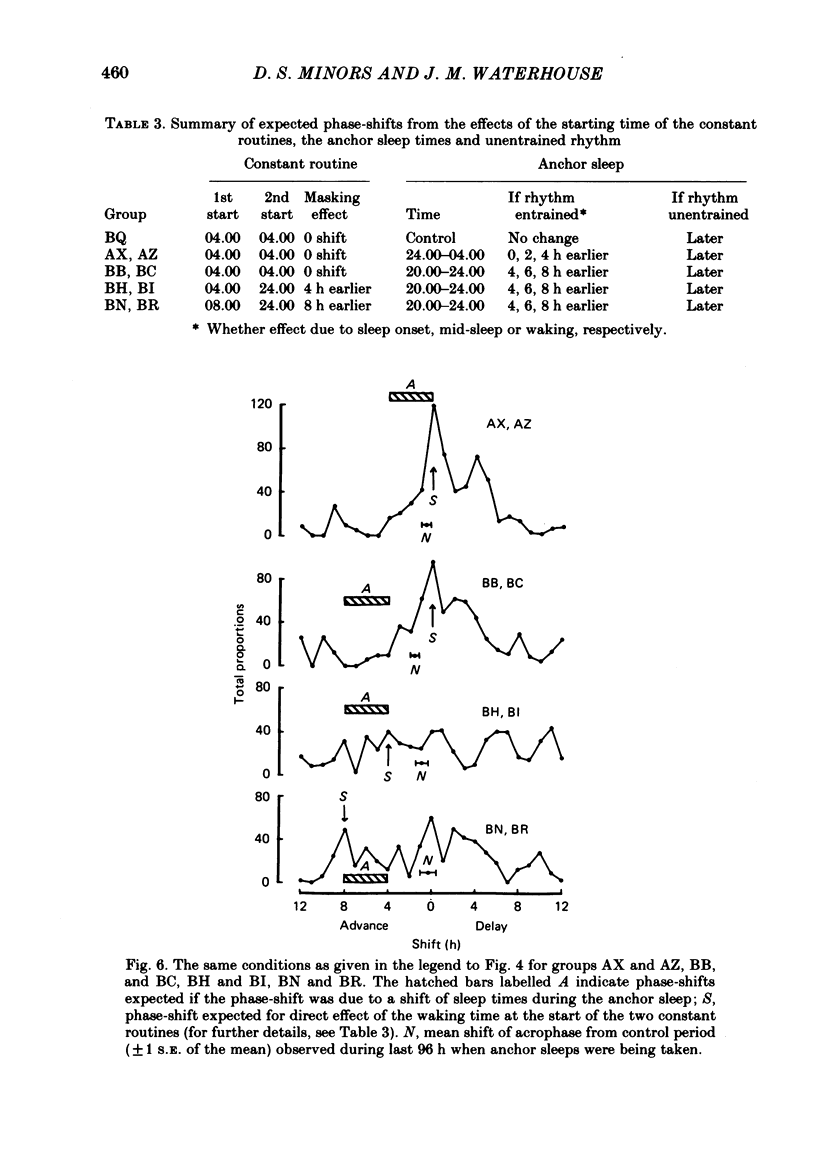
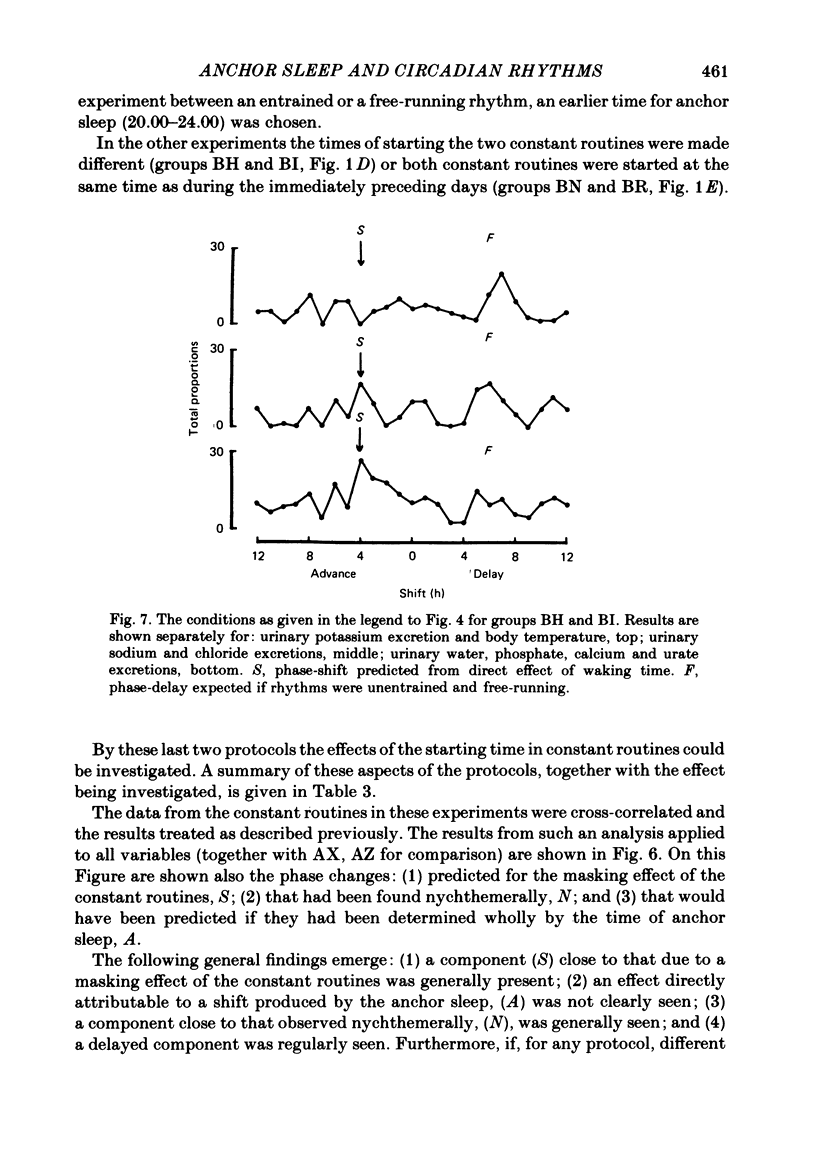
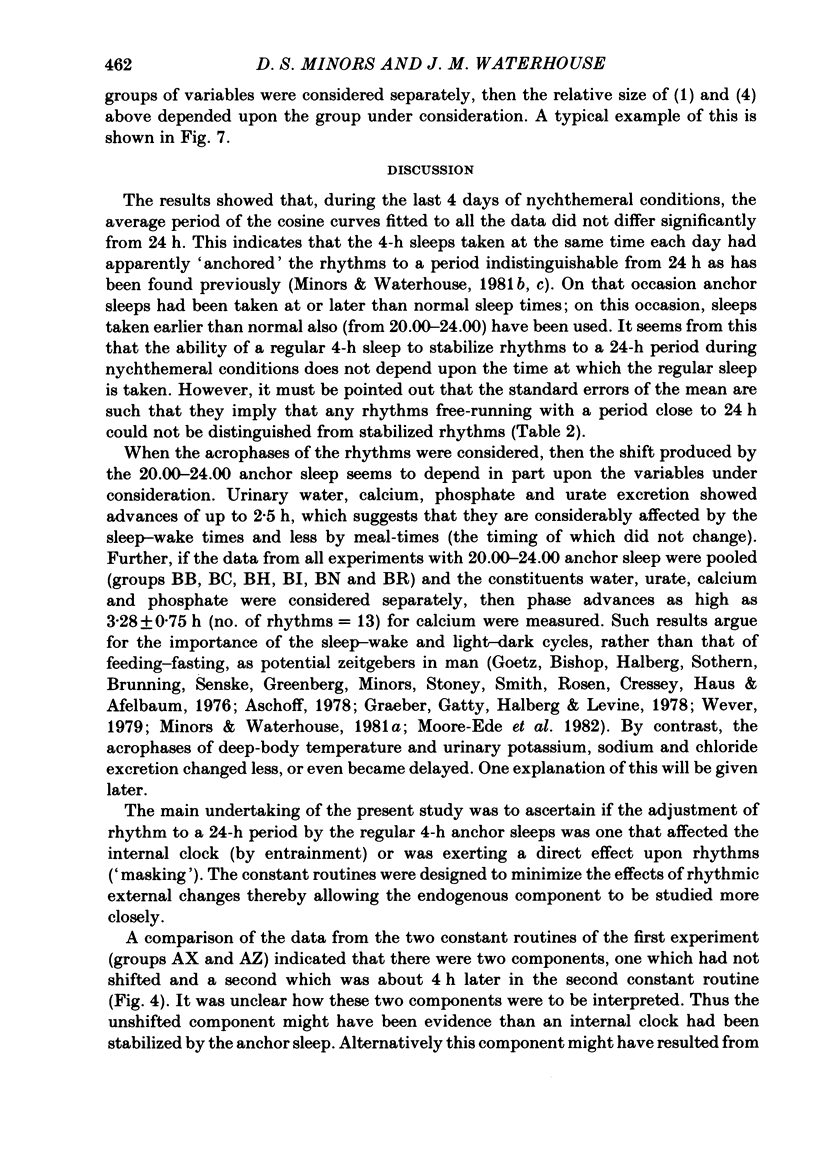
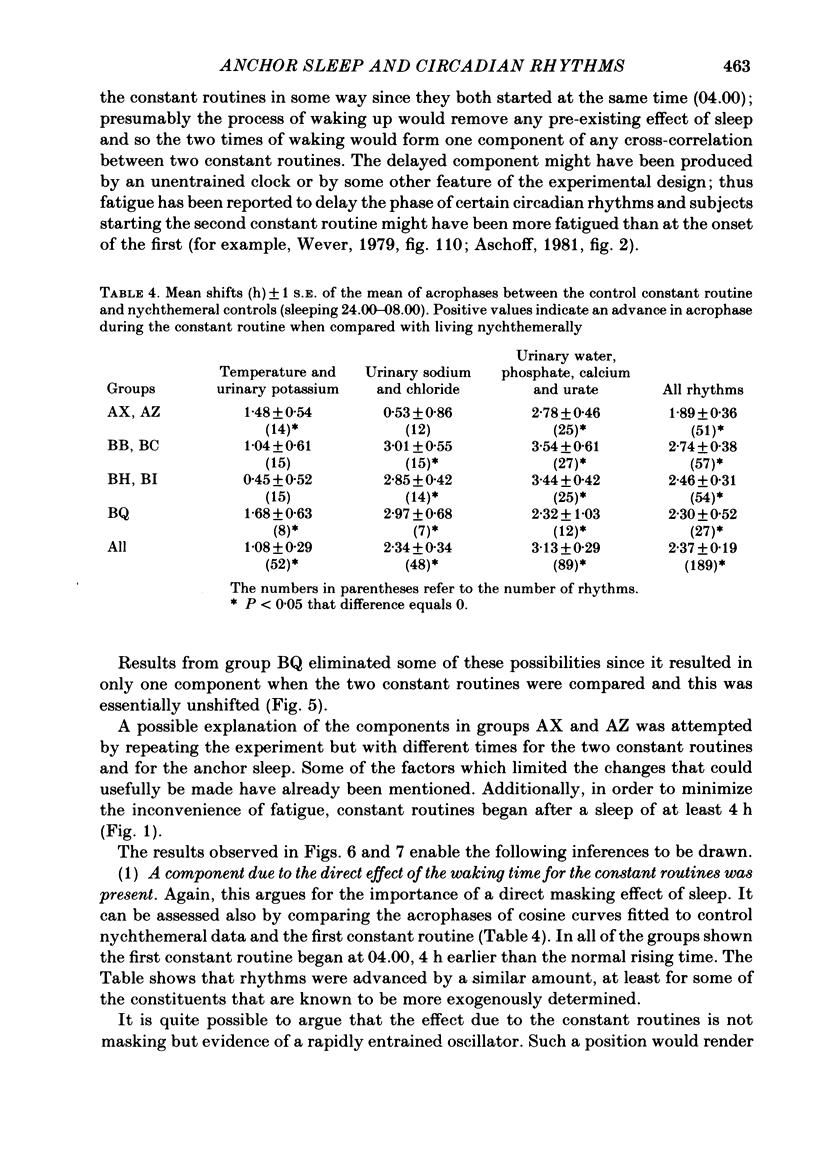


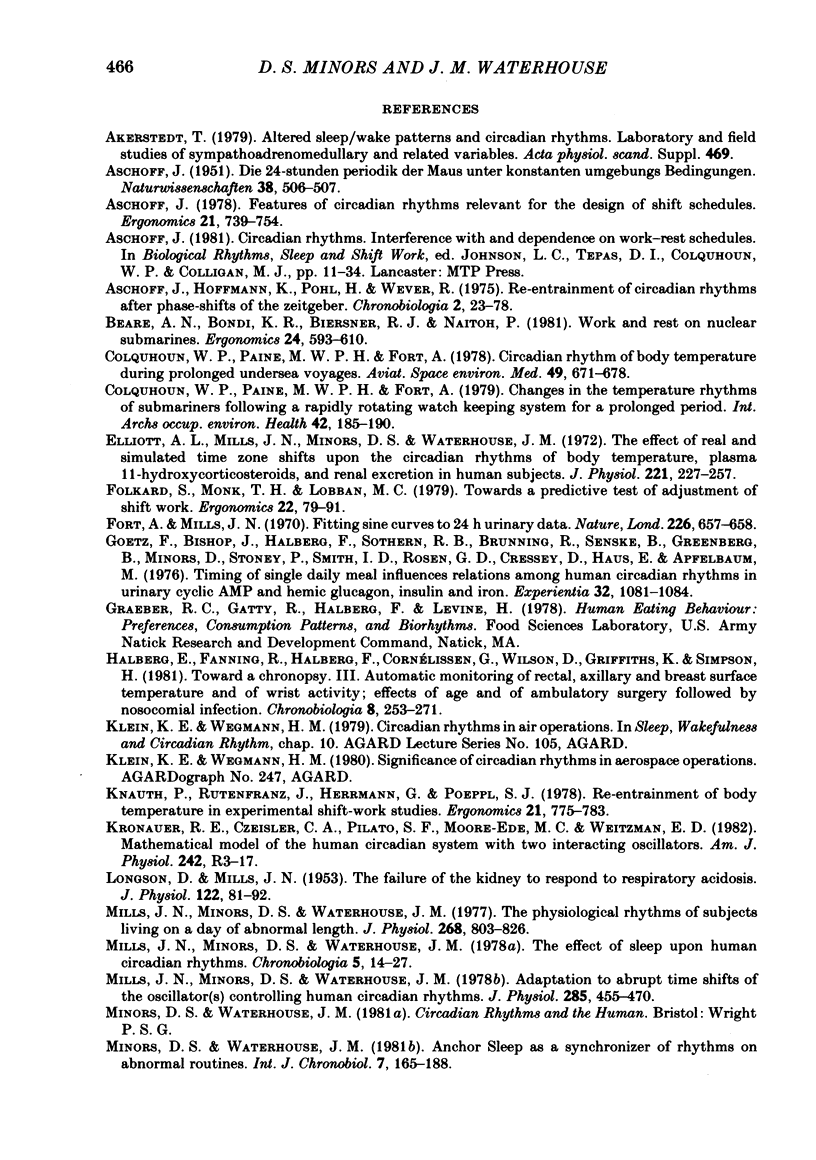
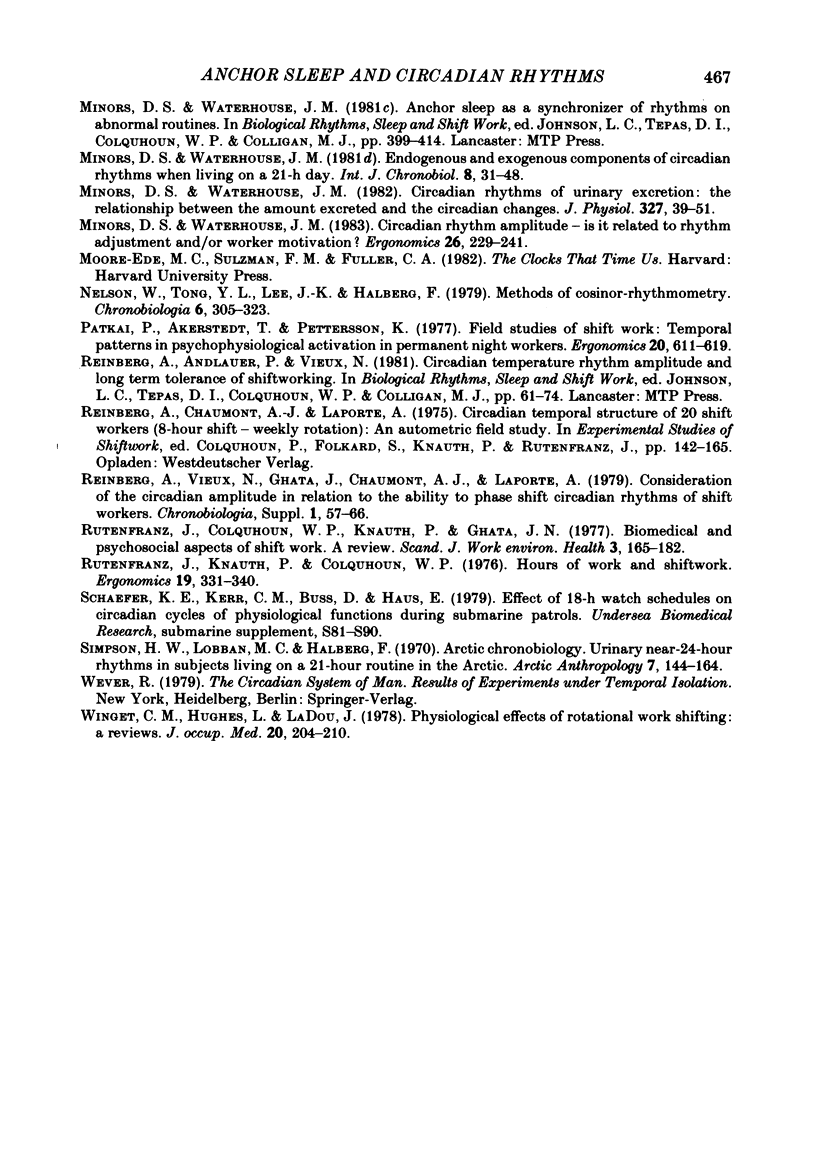
Selected References
These references are in PubMed. This may not be the complete list of references from this article.
- Aschoff J. Features of circadian rhythms relevant for the design of shift schedules. Ergonomics. 1978 Oct;21(10):739–754. doi: 10.1080/00140137808931777. [DOI] [PubMed] [Google Scholar]
- Aschoff J., Hoffmann K., Pohl H., Wever R. Re-entrainment of circadian rhythms after phase-shifts of the Zeitgeber. Chronobiologia. 1975 Jan-Mar;2(1):23–78. [PubMed] [Google Scholar]
- Beare A. N., Bondi K. R., Biersner R. J., Naitoh P. Work and rest on nuclear submarines. Ergonomics. 1981 Aug;24(8):593–610. doi: 10.1080/00140138108924882. [DOI] [PubMed] [Google Scholar]
- Colquhoun W. P., Paine M. W., Fort A. Changes in the temperature rhythm of submariners following a rapidly rotating watchkeeping system for a prolonged period. Int Arch Occup Environ Health. 1979 Jan 15;42(3-4):185–190. doi: 10.1007/BF00377772. [DOI] [PubMed] [Google Scholar]
- Colquhoun W. P., Paine M. W., Fort A. Circadian rhythm of body temperature during prolonged undersea voyages. Aviat Space Environ Med. 1978 May;49(5):671–678. [PubMed] [Google Scholar]
- Elliott A. L., Mills J. N., Minors D. S., Waterhouse J. M. The effect of real and simulated time-zone shifts upon the circadian rhythms of body temperature, plasma 11-hydroxycorticosteroids, and renal excretion in human subjects. J Physiol. 1972 Feb;221(1):227–257. doi: 10.1113/jphysiol.1972.sp009750. [DOI] [PMC free article] [PubMed] [Google Scholar]
- Folkard S., Monk T. H., Lobban M. C. Towards a predictive test of adjustment to shift work. Ergonomics. 1979 Jan;22(1):79–91. doi: 10.1080/00140137908924591. [DOI] [PubMed] [Google Scholar]
- Fort A., Mills J. N. Fitting sine curves to 24 h urinary data. Nature. 1970 May 16;226(5246):657–658. doi: 10.1038/226657a0. [DOI] [PubMed] [Google Scholar]
- Goetz F., Bishop J., Halberg F., Sothern R. B., Brunning R., Senske B., Greenberg B., Minors D., Stoney P., Smith I. D. Timing of single daily meal influences relations among human circadian rhythms in urinary cyclic AMP and hemic glucagon, insulin and iron. Experientia. 1976 Aug 15;32(8):1081–1084. doi: 10.1007/BF01933983. [DOI] [PubMed] [Google Scholar]
- Halberg E., Fanning R., Halberg F., Cornélissen G., Wilson D., Griffiths K., Simpson H. Toward a chronopsy: Part III. Automatic monitoring of rectal, axillary and breast surface temperature and of wrist activity; effects of age and of ambulatory surgery followed by nosocomial infection. Chronobiologia. 1981 Jul-Sep;8(3):253–271. [PubMed] [Google Scholar]
- Knauth P., Rutenfranz J., Herrmann G., Poeppl S. J. Re-entrainment of body temperature in experimental shift-work studies. Ergonomics. 1978 Oct;21(10):775–783. doi: 10.1080/00140137808931781. [DOI] [PubMed] [Google Scholar]
- Kronauer R. E., Czeisler C. A., Pilato S. F., Moore-Ede M. C., Weitzman E. D. Mathematical model of the human circadian system with two interacting oscillators. Am J Physiol. 1982 Jan;242(1):R3–17. doi: 10.1152/ajpregu.1982.242.1.R3. [DOI] [PubMed] [Google Scholar]
- LONGSON D., MILLS J. N. The failure of the kidney to respond to respiratory acidosis. J Physiol. 1953 Oct;122(1):81–92. doi: 10.1113/jphysiol.1953.sp004980. [DOI] [PMC free article] [PubMed] [Google Scholar]
- Mills J. N., Minors D. S., Waterhouse J. M. Adaptation to abrupt time shifts of the oscillator(s) controlling human circadian rhythms. J Physiol. 1978 Dec;285:455–470. doi: 10.1113/jphysiol.1978.sp012582. [DOI] [PMC free article] [PubMed] [Google Scholar]
- Mills J. N., Minors D. S., Waterhouse J. M. The effect of sleep upon human circadian rhythms. Chronobiologia. 1978 Jan-Mar;5(1):14–27. [PubMed] [Google Scholar]
- Mills J. N., Minors D. S., Waterhouse J. M. The physiological rhythms of subjects living on a day of abnormal length. J Physiol. 1977 Jul;268(3):803–826. doi: 10.1113/jphysiol.1977.sp011883. [DOI] [PMC free article] [PubMed] [Google Scholar]
- Minors D. S., Waterhouse J. M. Anchor sleep as a synchronizer of rhythms on abnormal routines. Int J Chronobiol. 1981;7(3):165–188. [PubMed] [Google Scholar]
- Minors D. S., Waterhouse J. M. Circadian rhythm amplitude--is it related to rhythm adjustment and/or worker motivation? Ergonomics. 1983 Mar;26(3):229–241. doi: 10.1080/00140138308963338. [DOI] [PubMed] [Google Scholar]
- Minors D. S., Waterhouse J. M. Circadian rhythms of urinary excretion: the relationship between the amount excreted and the circadian changes. J Physiol. 1982 Jun;327:39–51. doi: 10.1113/jphysiol.1982.sp014218. [DOI] [PMC free article] [PubMed] [Google Scholar]
- Minors D. S., Waterhouse J. M. Endogenous and exogenous components of circadian rhythms when living on a 21-hour day. Int J Chronobiol. 1981;8(1):31–48. [PubMed] [Google Scholar]
- Nelson W., Tong Y. L., Lee J. K., Halberg F. Methods for cosinor-rhythmometry. Chronobiologia. 1979 Oct-Dec;6(4):305–323. [PubMed] [Google Scholar]
- Pátkai P., Akerstedt T., Pettersson K. Field studies of shiftwork: I. Temporal patterns in psychophysiological activation in permanent night workers. Ergonomics. 1977 Nov;20(6):611–619. doi: 10.1080/00140137708931672. [DOI] [PubMed] [Google Scholar]
- Rutenfranz J., Colquhoun W. P., Knauth P., Ghata J. N. Biomedical and psychosocial aspects of shift work. A review. Scand J Work Environ Health. 1977 Dec;3(4):165–182. doi: 10.5271/sjweh.2777. [DOI] [PubMed] [Google Scholar]
- Rutenfranz J., Knauth P., Colquhoun W. P. Hours of work and shiftwork. Ergonomics. 1976 May;19(3):331–340. doi: 10.1080/00140137608931549. [DOI] [PubMed] [Google Scholar]
- Schaefer K. E., Kerr C. M., Buss D., Haus E. Effect of 18-h watch schedules on circadian cycles of physiological functions during submarine patrols. Undersea Biomed Res. 1979;6 (Suppl):S81–S90. [PubMed] [Google Scholar]
- Winget C. M., Hughes L., LaDou J. Physiological effects of rotational work shifting: a review. J Occup Med. 1978 Mar;20(3):204–210. doi: 10.1097/00043764-197803000-00010. [DOI] [PubMed] [Google Scholar]


